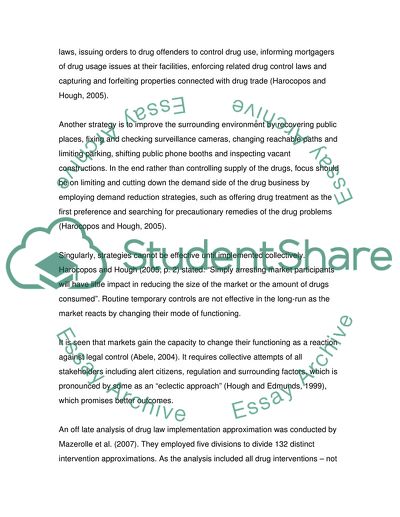Cite this document
(The Negative Repercussions of the Drug Trade on Local Communities Research Paper, n.d.)
The Negative Repercussions of the Drug Trade on Local Communities Research Paper. Retrieved from https://studentshare.org/law/1796846-street-level-policing-holds-the-key-to-both-reducing-the-extent-of-drug-trafficking-and-improving-the-quality-of-life-of-people-whose-daily-lives-are-affected-by-the-spread-of-drug-sellers-discuss
The Negative Repercussions of the Drug Trade on Local Communities Research Paper. Retrieved from https://studentshare.org/law/1796846-street-level-policing-holds-the-key-to-both-reducing-the-extent-of-drug-trafficking-and-improving-the-quality-of-life-of-people-whose-daily-lives-are-affected-by-the-spread-of-drug-sellers-discuss
(The Negative Repercussions of the Drug Trade on Local Communities Research Paper)
The Negative Repercussions of the Drug Trade on Local Communities Research Paper. https://studentshare.org/law/1796846-street-level-policing-holds-the-key-to-both-reducing-the-extent-of-drug-trafficking-and-improving-the-quality-of-life-of-people-whose-daily-lives-are-affected-by-the-spread-of-drug-sellers-discuss.
The Negative Repercussions of the Drug Trade on Local Communities Research Paper. https://studentshare.org/law/1796846-street-level-policing-holds-the-key-to-both-reducing-the-extent-of-drug-trafficking-and-improving-the-quality-of-life-of-people-whose-daily-lives-are-affected-by-the-spread-of-drug-sellers-discuss.
“The Negative Repercussions of the Drug Trade on Local Communities Research Paper”, n.d. https://studentshare.org/law/1796846-street-level-policing-holds-the-key-to-both-reducing-the-extent-of-drug-trafficking-and-improving-the-quality-of-life-of-people-whose-daily-lives-are-affected-by-the-spread-of-drug-sellers-discuss.


